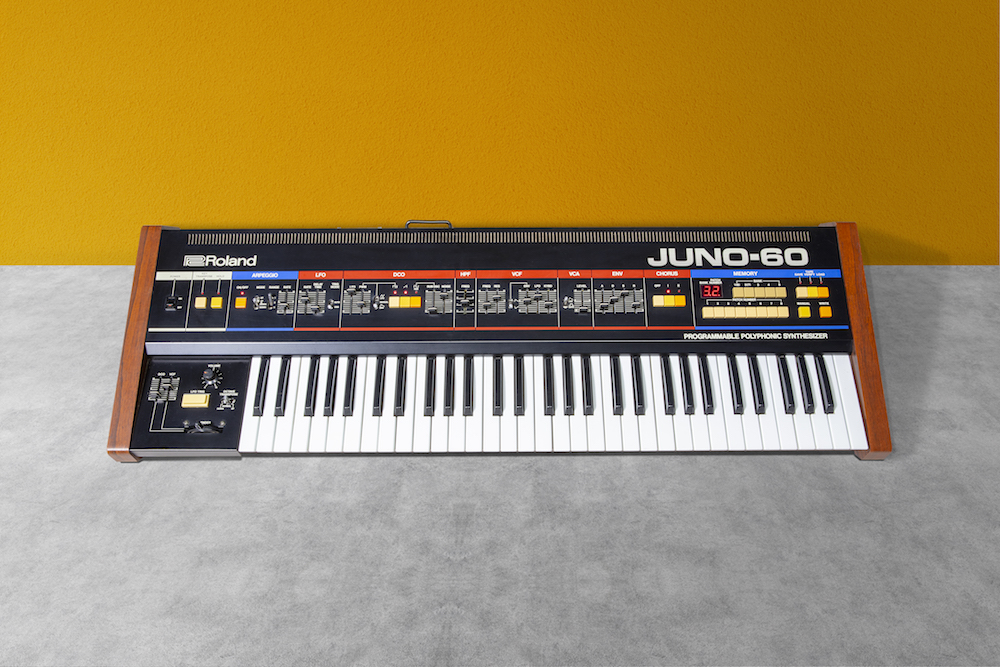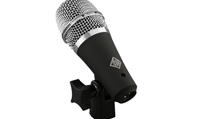TELEFUNKEN Elektroakustik of South Windsor, CT was founded by Toni Fishman in 2001 - the 21st Century revival of the original company founded in 1903. Today, the new TELEFUNKEN faithfully follows the tradition of excellence and innovation established by the original TELEFUNKEN GmbH of Germany over 100 years ago.
"TELEFUNKEN pioneered a new era in transducer technology and held the top position in microphone design throughout most of the 20th Century," explains Fishman. "While they ceased production in 1985, their microphones continued to be held in the highest regard," Fishman added. "But as time went on, keeping those prized mics operational became increasingly more difficult and prohibitively expensive."
TELEFUNKEN Elektroakustik founder and owner Toni Fishman. Photo by Nick Sonsini.
The new TELEFUNKEN Elektroakustik's origins actually glimmered in 2000 when founder and owner Toni Fishman acquired the rights to the name and diamond logo for use in North America. The company began with the reverse engineering of a single microphone part: the ELA M 251 polar pattern selector.
With that one single mic component successfully designed and manufactured, Fishman's goals were set high: to successfully reverse engineer the entire microphone exactly as it was originally manufactured. The next two years were spent developing each and every part of the microphone, down to the smallest distinctive details. Numerous original documents and drafts from TELEFUNKEN and AKG were acquired, and coupled with thorough reverse engineering, the ELA M 251 was brought back to life with meticulous accuracy.
TELEFUNKEN also offers two small diaphragm condenser designs including both a tube and FET circuit design, as well as three uniquely voiced Dynamic microphones. Over the past few years, the company has also introduced a new line of direct boxes, a series of XLR and instrument cables, studio isolation headphones, and a line of vacuum tubes. TELEFUNKEN's commitment to both the sonic excellence and quality of all of their products is rivaled only by their dedication to provide the best possible service to their customers.
The name TELEFUNKEN dates back to 1903 when the company began as a joint venture between Siemens & Halske and AEG (Allgemeine-Elektrizitãts-
"When we accomplished this milestone," Fishman adds, "we knew we could tackle other similar legendary microphones. Our goal all along has been to look into every classic microphone and bring it back to life with full respect and attention to the original details. As a result of this precision workmanship, we have been able to apply that knowledge to some entirely new microphone designs that have gained wide acceptance in the recording and touring industry."
TELEFUNKEN has established a product line that expertly combines vintage style and sound with the reliability of a modern-day microphone design. The Diamond Series features three primary microphone models that epitomize vintage vacuum tube microphone technology, which characterize and color the sounds of popular recorded music from the 1940's through today. The Alchemy Microphone Series is the company's next generation of large diaphragm condensers. These five microphone models feature unique sonic profiles developed from the ground up, utilizing a combination of vintage microphone elements and modern fidelity and reliability.
Throughout the 1900s TELEFUNKEN was a leader in the global technology industry with a number of ventures such as wireless radio communications, television sets, electronic video cameras, vacuum tubes, preamplifiers, and microphones, among other successful ventures.
"We've developed quite an extensive research and development facility here in South Windsor, Connecticut," Fishman says. "We have a complete performance soundstage and recording studio for realistically testing out our new microphones and auxiliary gear. TELEFUNKEN gained its global stature with an impressive line of both professional and consumer products."
In 1947, TELEFUNKEN began distribution of the world-renowned U47 large diaphragm, vacuum tube microphone. The U47 was the world's first switchable-pattern condenser microphone (cardioid and omnidirectional). It became extremely popular, especially in the United States where ribbon microphones were the predominant standard for recording studios. The fidelity and fine detail of the U47 pushed it to the forefront of use in recording studios worldwide.
During the decades that the ELA M 251 was not in production, it gained legendary status as one of the most treasured microphones of all time. The combination of the microphone's limited original production quantity and fragility led the good working-condition units to become increasingly rare and exponentially more valuable. To illustrate this, the Wall Street Journal published an article in the 1990s citing the original ELA M 251 to be one of the best overall investment holdings of the 21st century. As with any vintage piece of electronics, certain parts began to fail on these original units, making some of them unusable. Seeing the potential and need for this microphone, TELEFUNKEN was reborn in 2001.
Learn more and view an album of TELEFUNKEN artists, producers, and engineers: New link to TELEFUNKEN history:













